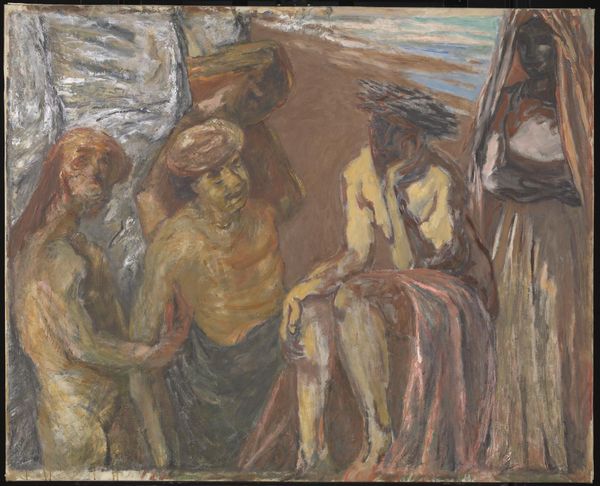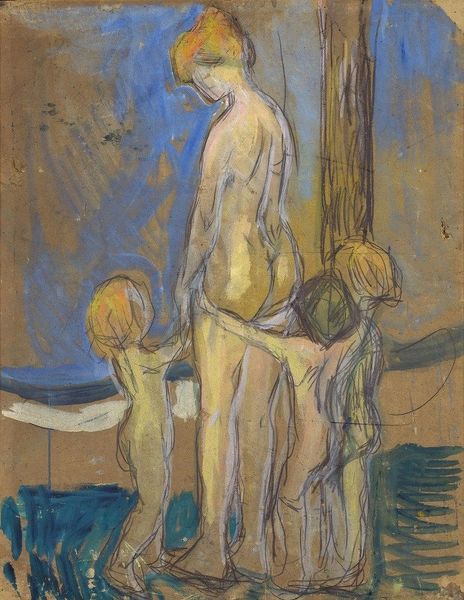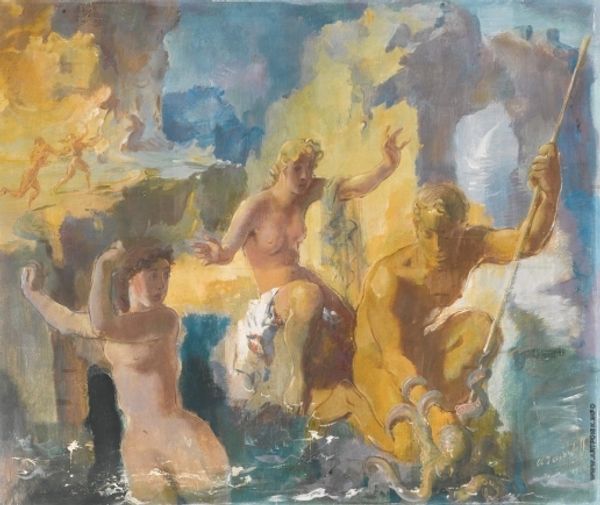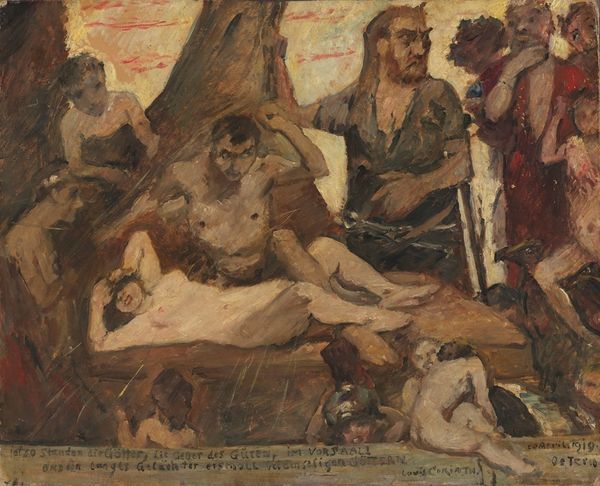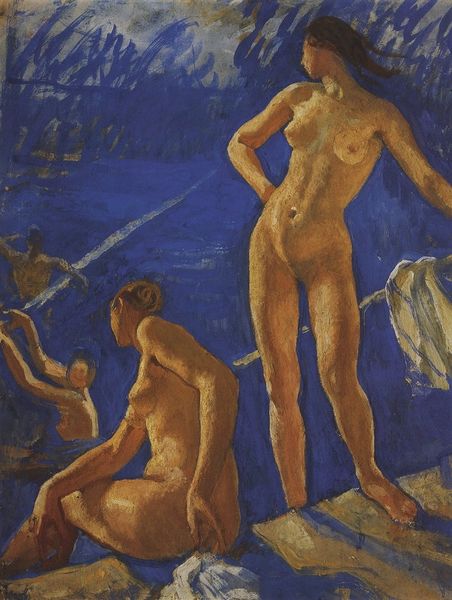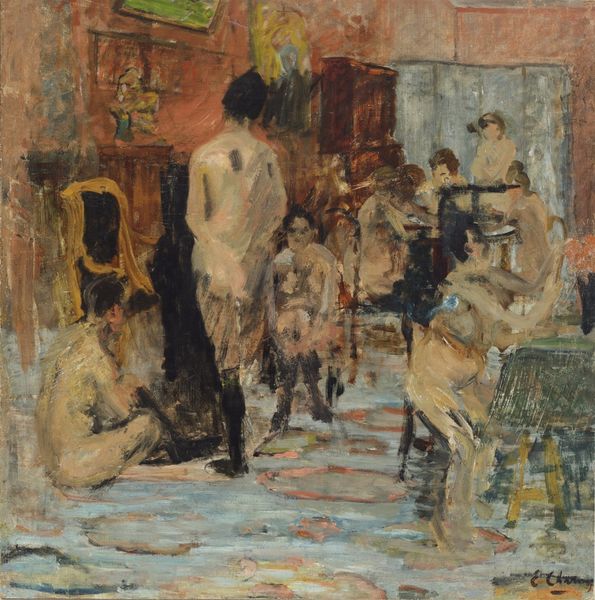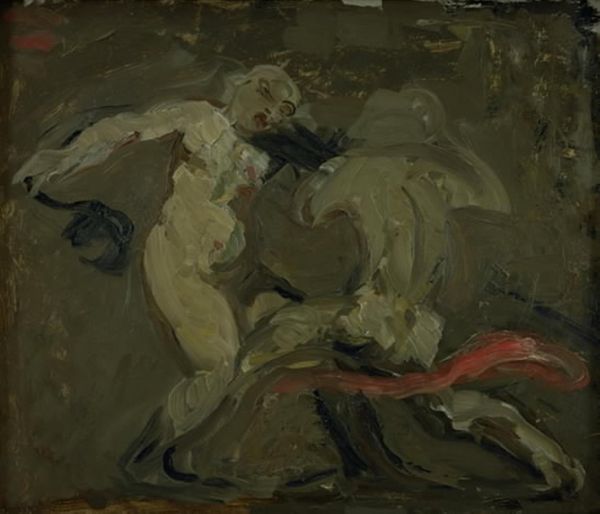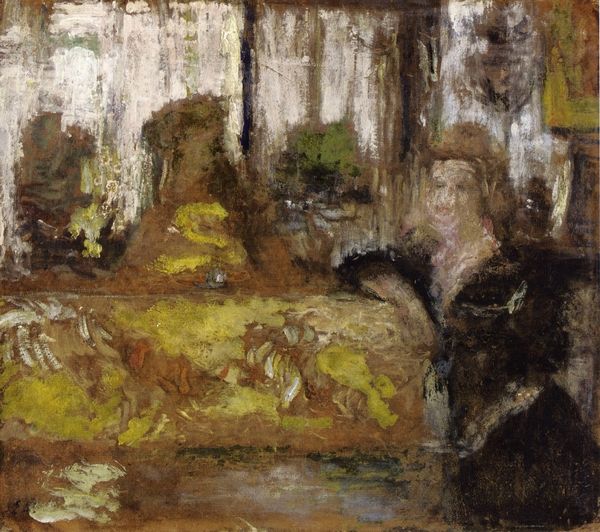
painting, oil-paint
#
figurative
#
art-nouveau
#
painting
#
oil-paint
#
landscape
#
impressionist landscape
#
figuration
#
oil painting
#
expressionism
#
symbolism
Copyright: Public Domain: Artvee
Editor: Tadeusz Makowski’s “Garden Scene with Figures and Swans,” painted in 1909 with oil paint, has such a dreamlike quality. The figures seem almost classical, yet the style is quite modern. What do you make of its historical context and presentation of figures? Curator: It's fascinating how Makowski blends seemingly disparate styles, isn't it? The scene evokes classical Arcadia, with its nude figures and pastoral setting. But notice how these idyllic themes become intertwined with the anxieties around expressionism gaining popularity at the time. He highlights the changing expectations within public art through this composition. How might the display of nudity impact a 1909 audience, particularly within Polish society at the time? Editor: That’s a great point; I hadn’t considered how potentially scandalous this would have been back then. The swans, almost like decorative elements, also draw my eye. Are they symbolic of something specific within the political context? Curator: The swans could certainly be read through symbolism; they’re a classic representation of grace, but also, more controversially, they could also be referencing luxury and detachment during growing unrest amongst laborers. Notice, too, how their stylized form relates to trends in Art Nouveau, and consider the role such a style played in reinforcing existing class distinctions and emerging ideas. How do the subjects interplay in such an unbalanced setting? Editor: That’s fascinating. I am not sure that I saw such social context reflected within this landscape originally. I love how the swans draw out additional complexity. Thank you! Curator: Likewise! The exercise highlights that art rarely exists in a vacuum, and understanding the historical and societal pressures is essential for meaningful interpretation.
Comments
No comments
Be the first to comment and join the conversation on the ultimate creative platform.

